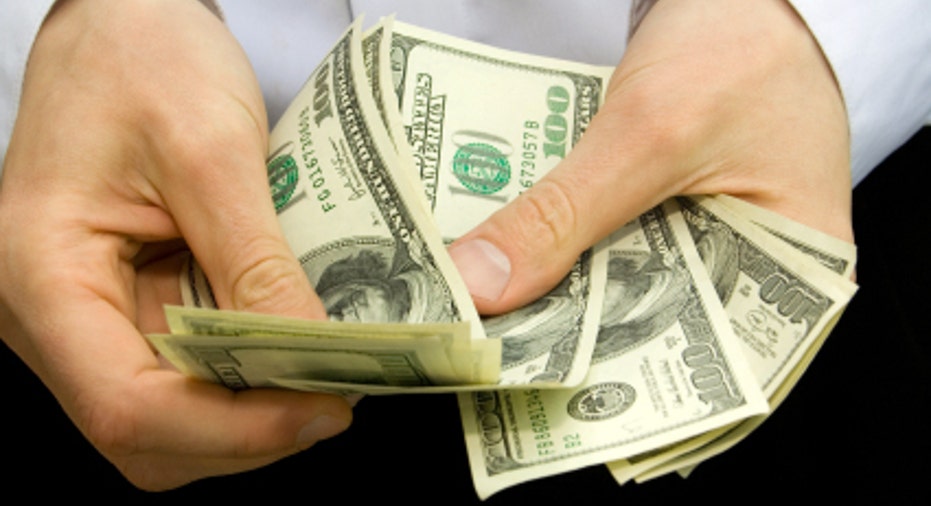Seven Green Ways to Wash Away Laundry Costs

The cost of caring for your clothing may not jump out at you the same way your food, housing and auto bills do, but that doesn't mean you can't save money on laundry expenses.
According to the Environmental Protection Agency, the average American family does nearly 400 loads of laundry each year. Along the way, they spend hundreds of dollars on electricity, water, detergent, fabric softener and other costs associated with cleaning their garments.
Fortunately, a few small changes can dramatically reduce your annual outlay on laundry costs while helping to reduce its financial impact on your household.
Use Less Detergent
Reduce the amount of detergent you use in each load and save money. Most Americans use too much detergent, wasting money and getting their clothes less clean in the process, says Mary Marlowe Leverette, laundry guide writer for About.com and a former Clemson University extension agent. She taught classes on laundry and stain removal.
"We all tend to think if a little bit works, a little bit more will be better," says Leverette. "But in fact, adding excessive amounts of laundry detergent can be detrimental."
Using too much detergent prevents the water in your washing machine from doing its part to release dirt and stains from your garments, Leverette says.
So why do people use so much detergent when it doesn't get their clothes any cleaner? Hard-to-see lines on detergent measuring caps are partly to blame, Leverette says.
If you're having trouble seeing them, she recommends using a permanent marker to outline the different gradations, especially the lowest one. Unless your clothes are heavily soiled, you should use the lowest gradation for most loads, she says.
If you end up cutting your detergent usage in half, you'll save around $80 annually.
Wash Most Loads in Cold Water
Reserve hot water for towels, washcloths, bed linens and clothing close to the body, such as undergarments. Such items may harbor bacteria that hot water can help kill, Leverette says.
Beyond that, only the greasiest, most soiled clothing needs hot water to get clean. Because up to 90 percent of the cost of washing clothes comes from heating the water, you can save money by using hot water only for very dirty clothes and always using cold water in the rinse cycle.
"I think you can use cold water for almost everything," Leverette says.
Hang Your Laundry Out to Dry
"That's going to be your biggest money saver," she says. "Use the free sun and the free air to dry your clothes."
For about $6, you can buy enough clothesline at your local hardware store to hang up a full load of laundry. If you do that with just 50 percent of your laundry loads instead of using a conventional clothes dryer, you could save almost $60 per year.
If you live in a neighborhood where laundry lines aren't allowed, you can string a clothesline in a well-ventilated garage, carport or laundry room.
Ditch Fabric Softener
Fabric softener isn't necessary to get clothing soft and wearable, Leverette says.
"In most instances, you're just adding another layer of product to your clothing," she says. "Most of the time, clothing is stiff because you have left-in detergent that hasn't been washed away."
If you want to leave fabric softener behind but feel your clothing is too stiff without it, Leverette recommends adding a half-cup of baking soda to each rinse cycle or a half-cup of white vinegar to the final rinse. However, don't use either in conjunction with bleach; it could release a toxic gas.
If static is what you're trying to avoid, remember that most static comes from fast-drying synthetic fabrics. Hanging them up to dry will get rid of any static problems.
At $6.49 for a 40-load container, liquid fabric softener isn't cheap. Getting rid of it could save money -- almost $65 per year.
If you can't bring yourself to ditch fabric softener entirely, Leverette recommends cutting the amount you use in half to get more mileage out of the money you spend.
Make Your Own Laundry Detergent
It's easier than you think to make your own laundry detergent, and it costs about 5 cents per load versus about 20 cents per load for the store-bought variety. Powdered detergent is especially easy to make. Here's a simple recipe from PlanetGreen.com to save money, with ingredients all available in the cleaning-supply aisle of your local grocery store:
- 2 cups finely grated soap.
- 1 cup washing soda.
- 1 cup borax.
- Mix well and use 2 tablespoons per full load
Buy an Energy Star-Certified Washer
The EPA and the U.S. Department of Energy estimate that replacing a washer 10 or more years old with an Energy Star-certified washer will save you $55 per year on water and electricity.
While the money you save probably won't cover the entire cost of a new washer, if you're due for a new one anyway, choosing an Energy Star-certified model will help you save $223 over its life cycle compared to a conventional washer, according to the Energy Star website.
Buy Easy-to-Clean Clothes
Buying clothing that is easy to wash and care for at home is one big step toward lowering your laundry costs to save money, says Leverette.
She recommends that consumers steer clear of garments that have to be dry-cleaned whenever possible.
"But if it's something your kids are going to wear or you're going to wear every day, if you can wash it yourself, you're going to save money," says Leverette.
Also, clothing that has a small amount of synthetic fibers can wrinkle less easily, requiring less ironing and reducing your energy usage and your outlay for products like spray starch, Leverette says.